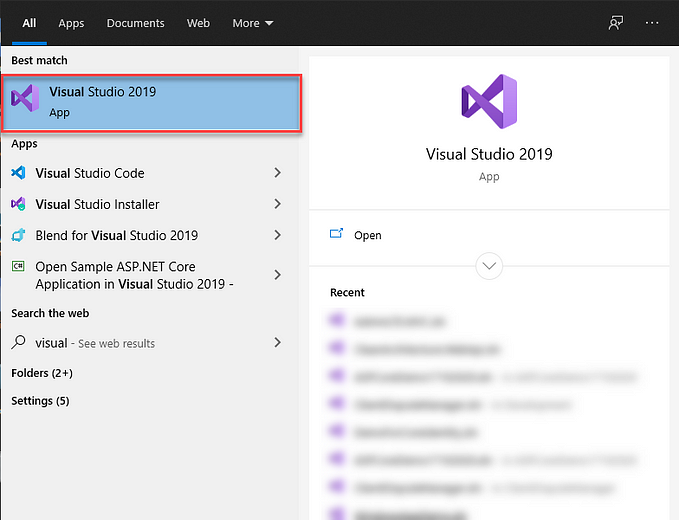The Microsoft Ecosystem and Its Advantages
Digital business transformation, in today’s hi-tech marketplace has become a business reality. For our businesses to create value for customers, it is imperative that our evolving business and rapidly changing technology landscape adopts transformation to create value for the customer. Therefore, every business today must transform to address new competitive forces and create new value. Digital business transformation, if done strategically, brings a deep understanding of customer, thereby, enabling you to design product and services that best meet their needs, streamline operations through application that improves responsiveness, service levels, and reduce costs, and delivers more empowered teams by providing them the right information at the right time.
There are 4 pillars of digital transformation that allows to engage with customers, optimize operations, empower employees, and transform products and services. Microsoft Dynamics 365 leverages digital transformation provides deep understanding of enterprise business to assist to digitally transform and at the same time achieve success in our own terms. When customer data is built into feedback loop, enterprises can deliver more effective and personalized products and services.
The digital feedback loop allows to connect data together and apply intelligence to get a deep understanding of business which includes sales, customer service, customer acquisition, and back-end operations. The Microsoft Power Platform can be used to integrate applications with existing systems to derive powerful business insights, and these insights turn into actions, these actions then enable better decisions and transformative processes to reimagine our engagement with our customers and generate greater value for them. To understand how this is done, let’s try and understand the Microsoft Ecosystem that leverages the Digital Feedback Loop.
The Microsoft Ecosystem is geared towards enterprise customers. And if you are an enterprise organization, Microsoft has created a powerful ecosystem with new cloud infrastructure and services. With Microsoft enterprise products and cloud services being so tightly integrated, it provides strong incentives for business. One would ask the question; how does it provide those incentives? Well, for example, OneDrive for business ties into SharePoint, whereas Teams and Skype integrates with Outlook, and Dynamics 365 Business Apps such as Sales, Customer Service, Field Service, Finance & Operations integrates and pulls data from Azure AD. So, with Microsoft’s investment in Azure, success with Office 365, and with an array of services such as machine learning, Internet of Things (IoT), cognitive services, etc. will put you as leaders in the digital ecosystem and thereby providing a strong business incentive.
Digital transformation may sound like a popular buzzword, but the fact is as organizations embrace technology to cater for a better customer experience, they need to be able to drill down on business facts to make best decisions for their businesses. It is therefore critical for companies to understand ecosystems to put customers first in front of their business operations. So, let’s get to understand the term “Ecosystem.”
Understanding the Term Ecosystem
The term “ecosystem” was coined by British ecologist Arthur Tansley in 1935 to recognize the integration of the biotic community and its physical environment as a fundamental unit of ecology within a hierarchy of physical systems that span the range from atom to universe. Or in simple terms, when we talk about animals and plants, we also must talk about where they live and function.
The word ecosystem thereafter has evolved. James F. Moore, a business strategist who studies co-evolution in social and economic systems pioneered the “Business Ecosystem” approach to study networks of organizations that together constitute a system of mutual support and that co-evolve contributions. In a Harvard Business Review article “Predators and Prey: A New Ecology of Competition”, Moore proposed that organizations are part of a business ecosystem rather than members of a single industry. Or in simple terms, to be able to satisfy customer needs, organizations must be part of business ecosystem, in which these businesses will co-evolve cooperatively instead in silos.
According to Brett Jones, Nielsen Connect Partner Network, “The evolution of the word continues today. Ecosystems now include communities that use shared, scalable resources to pursue challenging objectives and common interests. Ecosystems are about dynamic interactions between people, software, data, systems and services. But what makes them unique in the world of technology is the streamlined flow to connect, share, grow and transform together. Or in simple terms, in today’s digitally connected world, ecosystems are a key ingredient to grow existing markets and competing effectively.”
Microsoft’s Ecosystem comprises of 5 distinct pillars within the Microsoft stack. It is a cloud-based business applications platform that combines components of Customer Relationship Management (CRM), and Enterprise Resource Planning (ERP), along with productivity applications and Artificial Intelligence or AI. These pillars reside on top of Common Data Service platform.
To better understand Microsoft Ecosystem, it is important to peel the layers of the 5 pillars of this stack, and Common Data Service platform.

Common Data Service or CDS
What is CDS? (A lot of questions) Common Data Service or CDS, allows to securely store and manage data. This data is widely used by business applications. How is it stored? Data within CDS is stored within a set of entities. And what is an entity? It is a set of records used to store data very much the same as to how a table stores data within a data base. Common Data Service includes a base set of standard entities, but also allows to create custom entities specific to an organization.
So how is it used? well you can build powerful applications using this data via for example, PowerApps.
Why Common Data Service?
Okay, now that we understand CDS a little better, why use it?
One of the advantages within CDS is that our data within standard and custom entities provide a secure and cloud-based storage option. Some of the benefits of standard and custom entities are that they are easy to manage, easy to secure, access to our Dynamics 365 data, has rich meta data, provides logic and validation, and offers an array of productivity tools. Now let us dive just a little deep into benefits of CDS:
- It is easy to manage and secure
- Since both the meta data and data is stored in the cloud, so you don’t need to worry about details of how they are stored. And, since the data is securely stored, users can only see it if you grant them access
- It has rich meta data since data types and relationships are used directly within Power Apps
- It incorporates logic and validation, so that you can define calculated fields, business rules, build workflows and business process flows to ensure quality and drive business processes
- It provides productivity since entities are available to increase productivity and make sure data is accessible
- It provides easier app building experience since it allows data integration from multiple sources into a common store, and a single set of logic to maintain and operate over data
- It allows you to access our Dynamics 365 Data from Dynamics 365 Sales, Customer Service, Field Service, Finance & Operations as it is all connected through the common data service. This will give you the ability, for example, to build Apps using Power Apps.
Dynamics 365 Business Apps
Microsoft integrated Dynamics CRM and ERP solutions into one cloud enabled product offering. It revolutionizes CRM and ERP by applying intelligence to evolve from reactive business decisions to proactive insights that empower employees to accelerate business results. The Dynamics 365 Apps such as Sales, Customer Service, Field Service, Finance & Operations, Marketing, are all connected through the common data service, that makes it the best of the breed business application platform where our transactional information is stored. In addition, the recent acquisition of LinkedIn expands out the data augmentation of 500M sales professionals for Recruitment & Sales.
Azure, Data & Analytics
Can we leverage the Power of Azure and Analytics Platform to Transform our Business? Yes, we can, since Azure provides a rapid development platform to transform our business, whether it’s Artificial Intelligence, Bots, Internet of Things (IoT) or rapid development of mobile and web capabilities. It delivers better experiences and allows to make better decisions by analyzing massive amounts of data in real time. So how can these business insights that leverage the power of Azure and analytics help transform our business. Here are some examples of delivering intelligent actions that not only improves customer engagement and increase revenue but also lower costs.
- We can leverage AI (Artificial intelligence) to determine lead and opportunity scoring and determine the best opportunities with the highest value and highest probability of close to focus our sales team. One of our customers, a travel company leverages this to prioritize leads coming in and stack ranking the leads to maximize revenue by combining customer profile information with external data such as Experian credit scores.
- We can use bots to drive technical sales answers for reps on the road — ask questions and get responses. Bots can drive customer service Q&A and route to the most qualified client service rep based on initial questions answered via the bot.
- We can use Cognitive Services to allow real-time video, image, facial and text recognition services — Did you know that Uber uses facial recognition to validate drivers before they pickup customers for security purposes.
- We can also leverage forecasting algorithms to determine the proper inventory values.
3rd Party Apps
Like your iPhone or Android has a marketplace filled with apps that enhance your phone, Microsoft has their own marketplace of apps for Office365, D365, Power BI or separate Azure web apps, and Machine Learning Algorithms for things such as Forecasting, Fraud Detection as well. This marketplace also called Microsoft AppSource combines several separate marketplaces together. Here you can search for apps so that you can try and use, rather than buying a whole suite of software. The advantage is that users can now tailor fit small pieces of software to perform a certain business task, that can be user tested, and if proven a fit, can be used as a service. This parceled app style of software is unique and cost effective, how? well because you don’t need to spend on unneeded functions as part of the suite.
Purpose Built Apps
Microsoft PowerApps, a rapid mobile development platform, allows Low code, No code functionality for nontechnical users to build mobile applications from selectable templates. With this, you can rapidly expand additional functionality as PowerApps has natural hooks into the Business Applications, Azure Services and Productivity Apps. You can also leverage Flow for ease of integration and workflow approvals cross application, as Apps that are built using Power Apps provide rich business logic and workflow capabilities to transform manual business processes to digital, automated processes. Moreover, these Apps can run both in a browser or a mobile device.
Productivity
By exposing business application data into the productivity applications that we use every day like Outlook can increase productivity. How? For Example, in the past if a customer wanted to know the status of their order, any open cases, or invoices past due, you would probably call someone in Backoffice or operations or perhaps log into another system to get the information. However, now you can see all this information real time without having to leave you productivity application, since the information is presented in context of your conversation.
Leveraging other collaboration applications such as Teams and OneDrive control conversation, document management and collaboration related to the business applications such as sales pursuits, estimations.
Conclusion
The digital business transformation is about creating value and a competitive edge for the customer by bringing people together, being data driven, and streamlining processes. Microsoft Ecosystem thereby allows to unlock limitless potential by radically changing how we operate internally and compete in the marketplace. Microsoft Ecosystem leverages digital transformation by enabling enterprise wide innovation through technology, and by pushing into the intelligent cloud assists digital transformation reach every aspect of business. This creates a productive workspace that helps employees achieve more. It optimizes operations that assists in building state of the art digital service on scalable platforms and engages with customers to provide even greater value.
Keep Learning…. !!!









